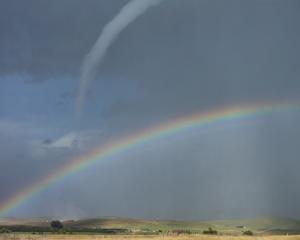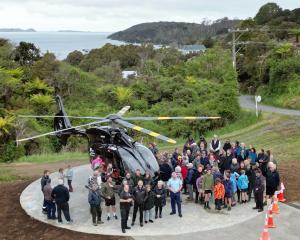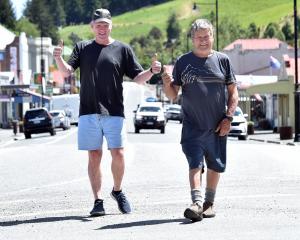On the second anniversary of the massive Diana Falls landslip, aerial footage has been released showing the extent of the damage and the work - described as the most complex rockfall protection in Australasia - carried out to reopen State Highway 6.
On September 10, 2013, heavy rain caused more than 40,000cum of rocks and trees to fall on the highway between Haast and Makarora.
It also caused other smaller slips in the area, one of which is believed to have contributed to the deaths of Canadian tourists Connor Hayes (25) and Joanna Lam (24), whose camper van was probably hit by a slip and swept into the Haast River, coroner David Crerar found.
The highway was immediately closed for 11 days and then at night for more than a year, as the New Zealand Transport Agency (NZTA) battled with how to make such a dynamic environment safe.
The road closures caused economic hardship for towns on either side of the slip, from Hokitika to Wanaka, as tourists chose alternative routes to travel between Christchurch and Queenstown.
The West Coast, where tourism makes up 10% of the regional gross domestic product, the second-highest in the country, was the hardest hit after many tourists decided against visiting once there was no loop road.
The 142km journey from Haast to Wanaka had become 950km, as travellers had to backtrack through Arthurs Pass, in Canterbury.
The highway reopened day and night in early November last year, marking the final stages of what the NZTA described as one of its most challenging projects on the West Coast for many years.
A solution had been found and Christchurch geotechnical engineering and construction company, Geovert, erected what was called ''the most complex rockfall protection system in Australasia''.
The work was carried out in three stages.
First, unstable rocks were removed from the 30m vertical rock face and a fence was erected at the base and draped against the slope to prevent rocks from falling on to the highway.
A temporary fence was then installed at the top, enabling large rocks - up to 200 tonnes each - to be broken into one-tonne sizes and removed.
Finally, a fence was erected one-third of the way up the slip, to catch any other rocks which became loose.
The NZTA said each of the fences was capable of stopping a boulder weighing up to 16 tonnes and the size of a small car, which was travelling at more than 90kmh.
The total cost of managing and remediating the slip was $8million.
• Jessica Maddock












